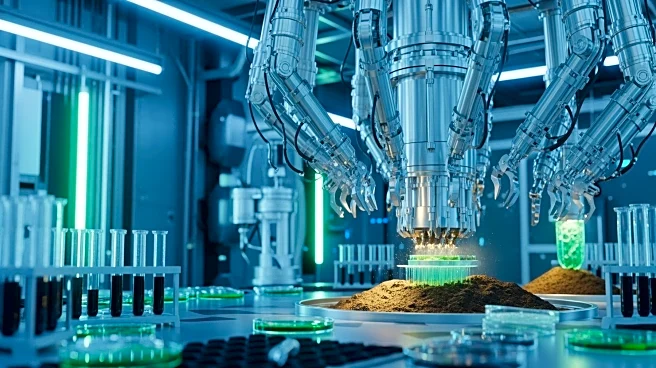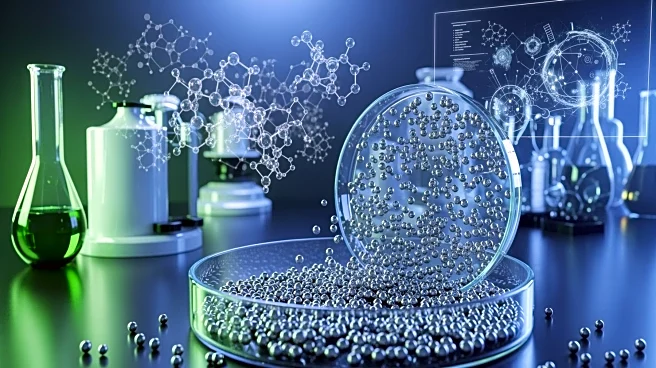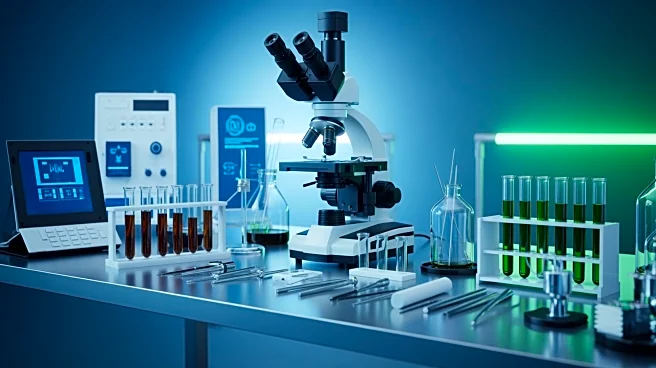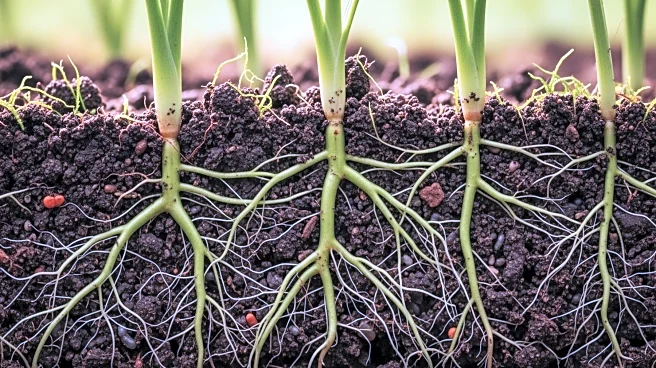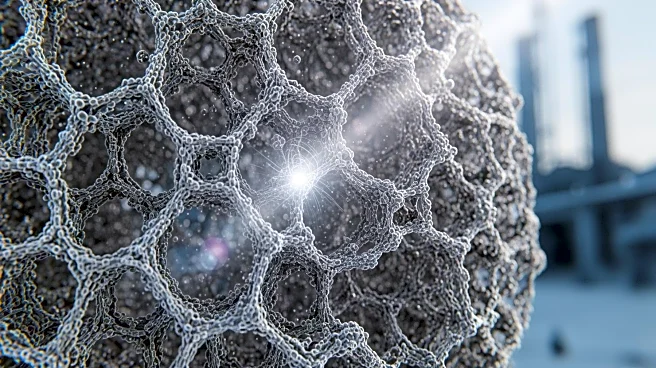What's Happening?
A team of scientists from the Chinese Academy of Sciences has developed a novel approach to address global soil pollution, a significant threat to ecosystems, agriculture, and human health. The method,
known as 'microbial iron mining,' leverages the natural capabilities of microbes and iron minerals to efficiently and sustainably remove toxic substances from soils. Soil pollution, exacerbated by industrial activities, agricultural chemicals, and improper waste management, poses serious risks due to contaminants like heavy metals, persistent organic pollutants, microplastics, and antibiotic resistance genes. Traditional cleanup methods are often costly, energy-intensive, and damaging to soil structures. The microbial iron mining process involves soil microbes activating natural iron cycling, which reduces and mobilizes iron minerals to produce nanoparticles that trap various pollutants, including arsenic, lead, mercury, organic pollutants, and microplastics. This nature-based solution enhances pollutant removal by adding agricultural residues and managing soil moisture, without the need for disruptive excavation or aggressive chemicals.
Why It's Important?
The introduction of microbial iron mining is significant as it offers a sustainable and cost-effective solution to soil pollution, which is a growing concern worldwide. This method not only addresses environmental contamination but also supports the United Nations Sustainable Development Goals related to clean water, safe food, and healthy ecosystems. By transforming polluted soils into self-cleaning biogeochemical reactors, this approach minimizes environmental footprints and opens possibilities for resource recovery, including rare earth elements crucial for clean energy technologies. The potential to immobilize toxic substances and transform persistent pollutants into less hazardous forms could lead to healthier agricultural practices and safer food production, benefiting both the environment and human health.
What's Next?
While practical field-scale applications of microbial iron mining are still under development, early studies in rice paddies and wetlands show promising results. These landscapes, naturally rich in iron and organic matter, demonstrate the method's ability to immobilize toxic substances and transform pollutants. Future steps involve scaling up the technology for broader application and exploring its potential in various soil types and environmental conditions. Continued research and development could lead to widespread adoption of this method, offering a cleaner and healthier future for affected regions.
Beyond the Headlines
The microbial iron mining approach highlights the importance of integrating natural processes into environmental management strategies. By utilizing nature's own purification methods, this technique not only addresses pollution but also promotes resource recovery, aligning with sustainable development goals. The ethical dimension of this approach lies in its potential to reduce reliance on harmful chemicals and invasive cleanup methods, fostering a more harmonious relationship between human activities and natural ecosystems.
